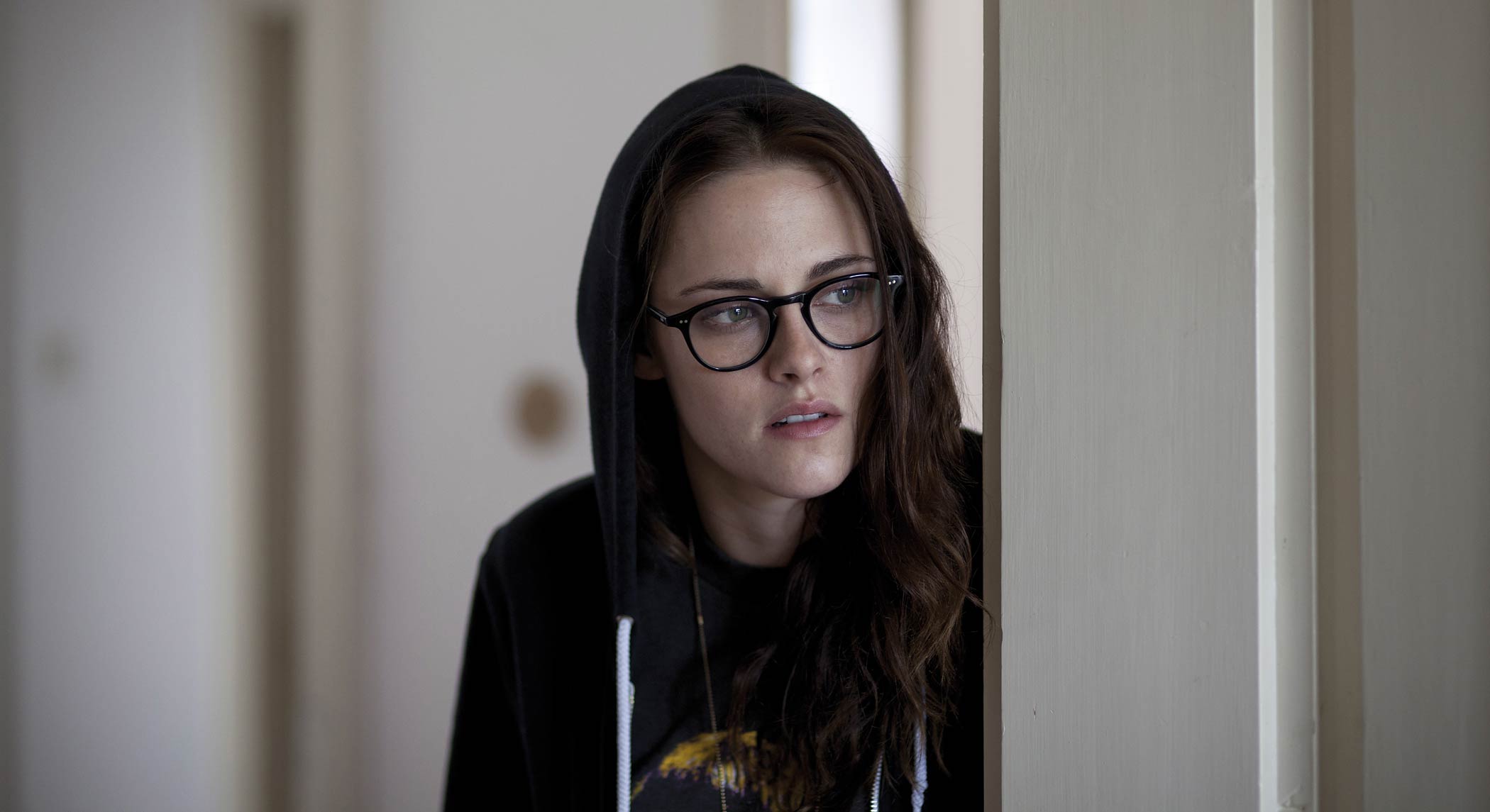
This Friday, Kristen Stewart’s newest film, Clouds of Sils Maria, opens in select U.S. cities. It’s a film that stretches Stewart’s formidable talents—placing her opposite Juliette Binoche, one of the foremost stars of world cinema—and one has already made waves internationally: For her role as a sly, knowing personal assistant to a diva-ish aging actress, she won an unofficial critics’ poll at the 2014 Cannes Film Festival and was mentioned as a potential Best Actress winner there (Julianne Moore ended up taking the prize). At year’s end, she became the first American actress ever to win the French version of the Oscar.
How did this happen to an actress still best known as Bella Swan? Between 2008 and 2012, Stewart appeared in five Twilight films, rising to megafame for playing a role more catalyst than character. Bella existed to be the pivot point of a love triangle, and the Twilight films demanded little of Stewart but her willingness to bite her lip pensively. (Offscreen, the demands were perhaps higher—she had to participate in a relentless publicity circuit.) The role was star-making, but Stewart seemed not to want to be the sort of star who did a lengthy press junket a year. She came in for frequent and harsh criticism online, as her discomfort with endless press obligations, and with fans who adored her boyfriend/co-star Robert Pattinson, sometimes transmitted as ingratitude for the opportunities Twilight that afforded her.
She’s answered those criticisms, now, elegantly, by bringing her stardom to offbeat productions. What better way to show that she was grateful for Twilight than to use the stardom it gave her to help bring attention to the masterful Clouds?
The film, directed by French auteur Olivier Assayas, places its two lead actresses in a claustrophobically close relationship, wringing tension from the differences in outlook between Binoche’s neurotic perfectionism and Stewart’s more pragmatic sense of what makes contemporary Hollywood tick. Stewart, who is in her real life admirably frank about the obligations of working in movies, brings to the screen a puncturing awareness of Binoche’s delusions. The character is unmistakably a Stewart creation: Clear-eyed, unconcerned with what others think of her. But the viewer could be forgiven for surprise that Stewart, still young and burdened with a certain reputation, manages to go toe-to-toe with one of the world’s great actresses.
But that surprise shouldn’t last much longer. Stewart’s recent creative success is hardly limited to Clouds: In the recent Oscar-winner Still Alice, playing a daughter whose toughness concealed a flawed relationship with her parents and deep fears for the future, Stewart did what the greatest stars do. She used aspects of her public image (in her case, a quintessentially millennial surliness) to create a character who felt as though she might walk off the screen at any moment.
The movie was flawed, but Stewart transcended thin material, something she hadn’t been able to do in the past. That’s because in Twilight and in the would-be franchise film Snow White and the Huntsman, she seemed so focused on just getting through the film alive that she was uncomfortable playing against her own persona. Stewart’s history in the public eye is now an asset she deploys artfully, as when her Clouds character deflates her employer’s fantasies about young Hollywood. It’s not labored or overwrought, somehow—it’s just proof of Stewart’s underheralded powers.
Stewart can’t seem to change the conversation around her: Recent coverage of the actress in the run-up to her film’s release have included what she thinks about Pattinson’s engagement (she’s doing okay!) and what she thinks of the celebrity-gossip industry (she’s against it!). Because of the manner in which she came to prominence, Stewart will always have people who are more interested in her fame than her work, both zealous friends and detractors. (And she may find that it would be better not to acknowledge the tabloid press at all, rather than validating it with constant mentions in interviews.)
But by choosing roles in which she’s able to spin variations on an edgy young woman with deep, almost scarily intense passions, Stewart is making the absolute most of her fame. More young stars should be as savvy, and as willing to tempt the haters, as is Stewart in her pursuit of new shades and dimensions of Bella Swan-ish angst. She’s doing the same thing as Jennifer Lawrence, who finds roles in which she’s able to be outspoken and relatable. In temperament, Lawrence is Stewart’s opposite. Yet their talents are comparable, and Stewart is making her mark by creating work out of the uncomfortable, strange world of modern fame.
More Must-Reads from TIME
- Why Trump’s Message Worked on Latino Men
- What Trump’s Win Could Mean for Housing
- The 100 Must-Read Books of 2024
- Sleep Doctors Share the 1 Tip That’s Changed Their Lives
- Column: Let’s Bring Back Romance
- What It’s Like to Have Long COVID As a Kid
- FX’s Say Nothing Is the Must-Watch Political Thriller of 2024
- Merle Bombardieri Is Helping People Make the Baby Decision
Contact us at letters@time.com